By Ken Archer, SVP, Product at Upwave
When programmatic advertising launched in the early 2000s, it was an antidote to the proliferation of publishers and media units in Internet advertising that strained the manual resources historically used for media buying and selling.
The fragmentation of media, initiated by the growing advertising marketplace on the Internet, had resulted in more overhead. Buying teams had to do media deals with more and more media companies, and publishers struggled with the sheer amount of inquiries. The only way either side could meet their respective demand was to overstaff, which created its own issues.
Enter programmatic: the automation of the media buying mechanism to produce cost savings and efficiencies for both publishers and advertisers as ad deals were completed on both sides by computers.
Programmatic in these early days was not a media channel or strategy. It was a solution to the increasing bloat and complexity of the buying environment, reducing the need for humans on the buy- and sell-side to connect and haggle over pricing. The goal was to create efficiencies and enable more real-time advertising based on available inventory.
And while programmatic is still an effective and dominant mechanism in 2022, new bloat, overhead and hiring issues are weighing the industry down because of growing challenges of measurement–requiring new and innovative ways to maintain the efficiencies that made programmatic so valuable.
Measurement Pain Points Demanding New Innovations in Automation:
- Measurement today requires significant human resources: The fragmentation of identity, coupled with the advent of tech-enabled capabilities that allow brands, agencies and publishers to track and measure all media–not just digital–means additional people are required to set up campaign tracking, analyze results, and merge results between inventory sources that address identity differently. Humans are incredibly involved, and there are too many manual steps required to answer basic questions about campaign reach and performance.
- The Great Resignation: If that weren’t enough, ad agencies are losing employees just like any other sector, and high turnover means the institutional knowledge to manually manage the first pain point is constantly going out the door while smaller teams must keep campaigns going.
- Measurement quality is suffering as a result: The result of the first two pain points is massive uncertainty at the end of campaigns over basic questions such as how many people were reached, or whether basic business outcomes were at all impacted by the campaign. Researchers and media executives respond by investing significant resources constructing contrived “narratives” about the campaign to justify continued budgets that simply hide the underlying uncertainty over campaign metrics.
The reality has set in: the technology supporting advertising needs to step up. Emerging tech/innovation for automation in media measurement today offers the same benefits as the launch of programmatic in the early 2000s.
The industry needs a new wave of tech-enabled automation solutions, built upon AI and machine learning, that can streamline measurement processes and enhance any work that needs to be done manually.
The global marketing automation market for technologies enabling lead generation management, customer lifecycle marketing, and customer retention is expected to reach $8.42 billion by 2027, according to a Grand View Research study.
Companies also need to re-embrace leanness and agility to rethink how they best deploy their human resources. Instead of focusing on specific job roles and hiring people for them, they should cultivate a culture where humans are versed in using technology to make meaningful decisions on multiple steps along the advertising journey.
Examples of Automation Solutions
Tagging and measurement set-up via IAS: Eliminating back-and-forth manual “tag wrapping,” enabling a leaner process to combat ad fraud and ensure brand safety, contextual targeting and viewability.
Media and campaign analytics integration via Datorama: Using automation and AI to streamline data integration, analytics and reporting.
Media billing via MediaOcean: Consolidate media intelligence, management, and finance on one single platform that provides a single-pane-of-glass view versus dozens of spreadsheets and decentralized admin panels.
Advertisers and publishers both must review their tech stacks and their manual processes to see where investment in new technologies can increase efficiencies and decrease costs. Programmatic disrupted advertising once, and we need a new disruption.
Source: here


